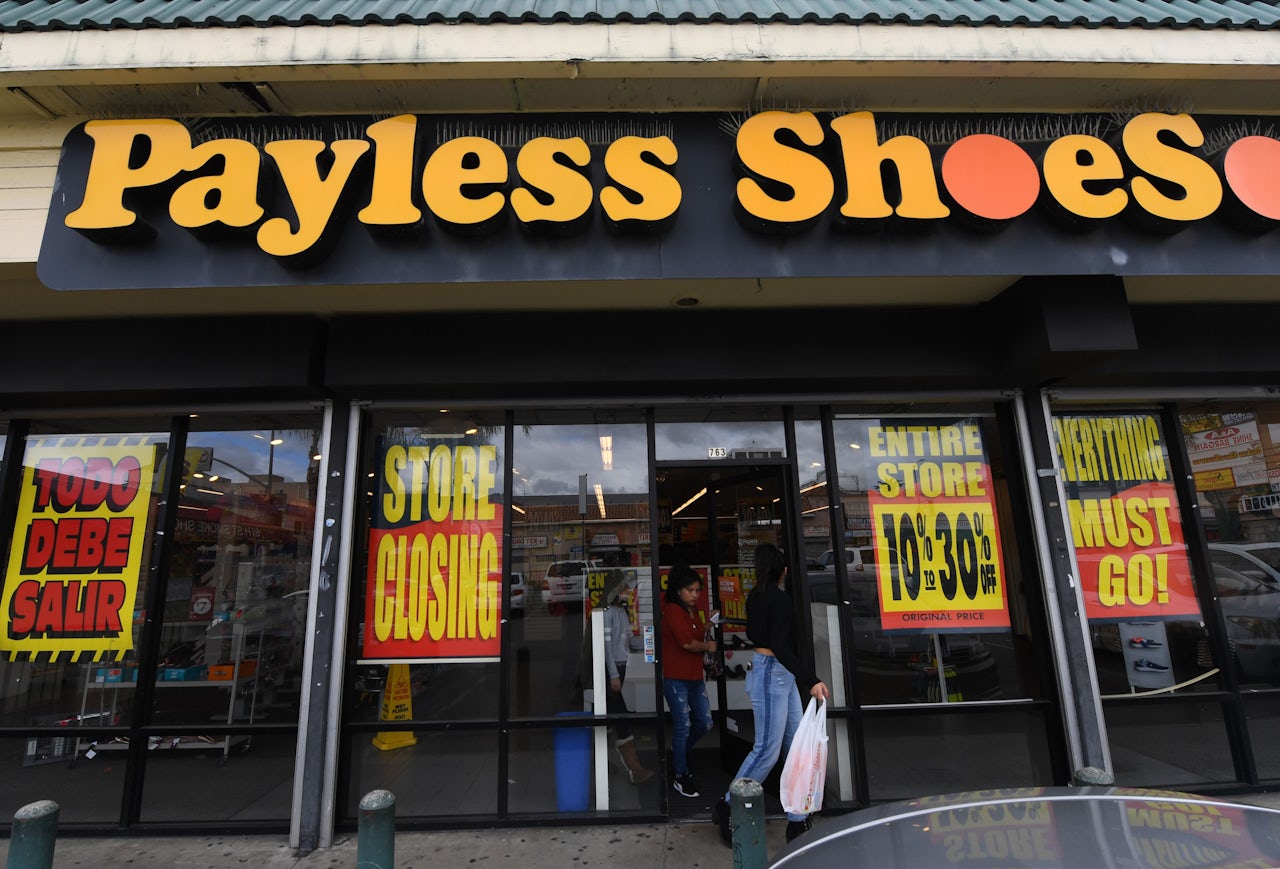Last February, Payless ShoeSource announced that it would shut down its 2,500+ North American locations, with plans to lay off some 16,000 workers. After one failed bankruptcy restructuring in late 2017, the discount shoe megachain was supposedly set to permanently close its doors after its second bankruptcy.
But corporate America has a funny way of letting brands die, and bringing them back to life. On Thursday, Payless announced that it had exited bankruptcy, and is now “poised” to execute a new business strategy for 2020. Although Payless has not specified the number of stores in the U.S. it plans to reopen, there’s virtually no chance that it could come anywhere near the at least 4,300 stores the company operated at its late 1990s and early 2000s peak (or the 25,000 employees it once had), given that its physical footprint was part of what drove it into successive bankruptcies in the first place (though, of course, private equity had a lot to do with it as well).
Instead, Payless’ relaunch resembles an increasingly common strategy to reanimate dead companies primarily as brands. No longer the businesses they used to be, the new stores are cleansed of what was previously their single biggest cost: their workforce. This past holiday shopping season, Toys ‘R’ Us was brought back from the dead in the same way, resurrected as a physical catalog of name-brand toys rather than a store that makes money from what it sells. Only a couple dozen of the 33,000 workers it laid off have been brought back at its handful of new stores. Radioshack began a similar “comeback” in 2018, licensing its brand name to the mall chain Hobbytown and remaking its online store after several bankruptcy proceedings.
Companies don’t even have to die, or even be in the retail business, in order to become brand-first businesses that make money from licensing. Sports Illustrated was bought from its publisher Meredith Corp. by the licensing conglomerate Authentic Brands (which also owns the posthumous “brands” of Muhammad Ali and Marilyn Monroe) last May, primarily for the value of SI’s name, photo archive, and special editions like its swimsuit issue. In all these cases, the pivots and relaunches required layoffs, pruning away all or most of the workers from the remaining value they created for their dying employers.
Though Payless plans to open some undefined number of stores, their value will be to market Payless brands, and to remind customers that Payless hasn’t actually gone extinct.
Payless has yet to offer many concrete details about what its future in the U.S. will look like (it still operates over 700 stores internationally, through an entity that was unaffected by the bankruptcy proceeding). But it’s easy to see where it’s headed: Payless’ new CEO, Jared Margolis, previously served as the president of a joint venture between the Creative Artists Agency and the Global Brands Group, which claims to be the largest licensing company in the world. And if you go to Payless.com you’ll find links to Payless store brand products like Airwalk sneakers and Lower East Side boots, but which direct you to purchase those items on Amazon (much like Toys ‘R’ US, whose online store drives customers to Target.com). (This is not how it has always looked, clearly: In the past, it operated as a more standard sales portal, where you bought shoes directly through the site.). Though Payless plans to open some undefined number of stores, their value will be to market Payless brands, and to remind customers that Payless hasn’t actually gone extinct.
Founded in Topeka, Kansas in the 1950s, Payless has never had the all-American cultural cachet of Toys ‘R’ Us or even Radioshack. Shopping at Payless, as Sara Tatyana Bernstein wrote in The Outline last year, connoted poverty and uncoolness, but also a kind of an oddball aesthetic. It’s where men with irregularly large feet and children with special physical needs could find shoes that could accommodate them, and at a price that wouldn’t break the bank.
Because shopping on the internet is defined by endless inventory, these kinds of needs can now be met more specifically, provided you have a credit or debit card, and can wait a few days for the package to show up — a luxury of time and banking that isn’t available to everyone. They also come without the knowledge and care of Payless workers who, already working at a discount retailer, were paid a pretty measly wage — averaging less than $10 an hour.
Payless ShoeSource, no matter in what form it returns, will not have those thousands of people to help its customers, or earning wages for their own families. “When department stores treat you like crap [for being poor], Payless was always friendly,” one person recalled in an interview with Bernstein. Unsurprisingly, in an economy concerned with squeezing out every possible dollar, that human touch is the first thing to go.
